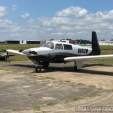Request Coaching on Mooney Dip
-
Members Online
- dkkim73
- tclimb
- Hoffmb01
- redbaron1982
- MikeOH
- Grumpy
- 201Mooniac
- Sue Bon
- 67 m20F chump
- bluehighwayflyer
- acekng1
- gabez
- Trenton W
- eman1200
- 231MJ
- lclyons
- IvanP
- AspiringOwner
- Rob Mason
- mach
- daytonabch04
- pirate
- ErikL72
- Nippernaper
- Fritz1
- DonMuncy
- rklems
- hazek
- LasarAviation
- Yan X
- TheAv8r
- Sabremech
- Larry
- EricJ
- NickM20F
- PT20J
- Brandt


Recommended Posts